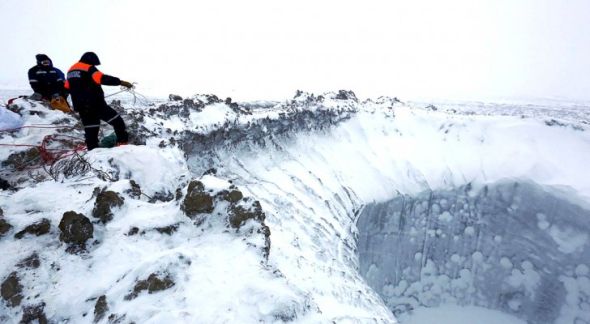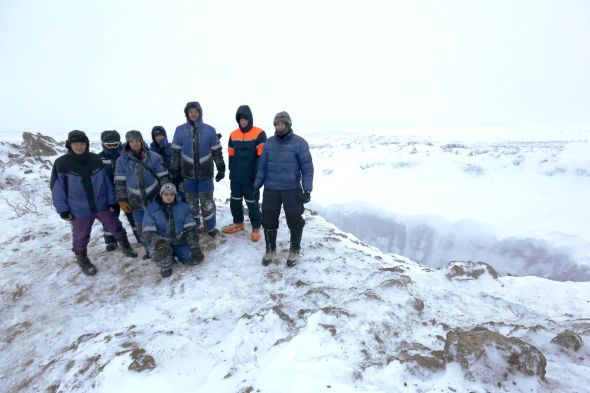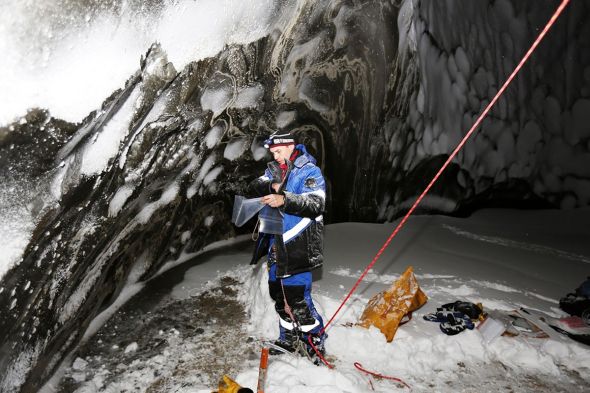
Since it was discovered, a group of scientists have been working hard to figure out more secrets about one of the three mysterious holes that were spotted in Siberia last July. The scientists have new information about the mysterious crater on the Yamal Peninsula in Northern Siberia, which will hopefully help find where the holes came from.
The scientists succeeded to reach the bottom of the newly-formed crater and made it back with some amazing pictures. The hole was believed to be formed in September 2013; there are many theories about the way this and other similar phenomenon were formed.
Actually, this amazing, bizarre hole is not the only one in Siberia. A few weeks later, two other craters with mysterious sources were found relatively nearby.
Speculations as to what caused the crater include meteorite impact, weapons testing and even aliens taking soil samples! Moreover, believe it or not, there may be a connection between the holes and the infamous Bermuda Triangle. After the scientists discovered the first Yamal crater, they took some soil, water, and air samples to examine them. There were a variety of explanations thrown around for how the mysterious sinkhole came to be.

Obviously, these holes weren’t man-made and most likely, not extraterrestrial. The researchers estimated that global warming and stray missiles could be the reason behind the holes formation. Because the hole is located just 25 miles from the largest gas field in the region, fossil fuel exploration is another cause for the formation.
Possible Explanations About The Holes
Some Russian scientists believe that gas hydrates caused an underground explosion. As it was mentioned above, the largest gas field in the region is located just 25 miles from one of the holes. Gas hydrates are ice-like forms of water containing gas molecules, including methane. This is what may be similar to the Bermuda Triangle phenomenon, because such holes can be found in permafrost regions as well as under the water, scientists say.
Pingo is a dome-shaped mound consisting of a layer of soil over a large core of ice, occurring in permafrost areas. It’s also known as a hydrolaccolith.
In fact, this is the most logical explanation. The region has been clobbered by climate change and the past few years are the warmest they have been in 120,000 years, so when the ice melted away, an expected exposed crater formed. This is what possibly happened as a pocket of gas in the soil became heated and started building pressure.

According to The Siberian Times, scientists used a climbing tool to reach the bottom of the hole where they found a frozen lake about 35 feet (10.5) meters below the surface. Because the ground is solid in winter, the researchers chose to decline in this time of the year. With air temperatures at -11˚C (12.2˚F), the researchers climbed 16.5 meters (65 ft) down into the funnel of the crater and onto the frozen lake at the bottom. The frozen lake consisted of gas and water.
What Is The Link Between The Holes And The Bermuda Triangle?
The Russian scientist Igor Yeltsov, deputy head of the Trofimuk Institute, said that both the Siberian hole and the Bermuda Triangle may share the same phenomena. He said: continue reading . . .
